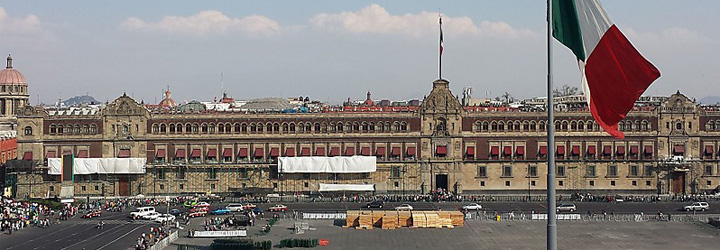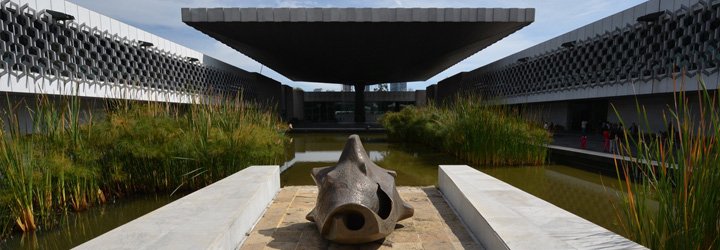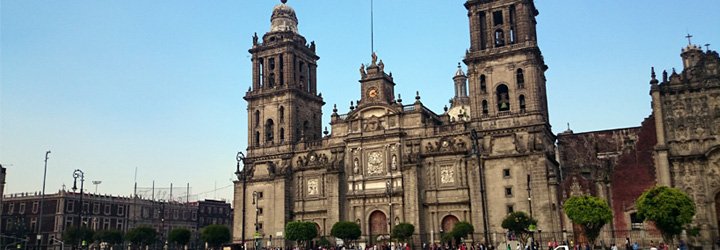Mexico City (Ciudad de México) lies at an altitude of more than 2,200 meters in the Anáhuac Valley surrounded by mighty mountain ranges. The city’s location is breathtaking; two magnificent snow-covered volcanoes, Popocatépetl and Iztaccíhuatl, tower above it at heights of more than 5,000 meters. The city preserves countless reminders of its past, though Pre-Columbian art and architecture exist only in isolated fragments and museum reproductions since the Spanish Conquistadors built their new city on the ruins of the old Aztec metropolis of Tenochtitlán.
Top-Rated Tourist Attractions in Mexico City
1. Zócalo: The Birthplace of the Constitution

Heart beating city of Mexico is Zócalo – the Plaza de los angeles Constitución (constitution rectangular) – where the united states of america’s first charter become proclaimed in 1813. Measuring a few 240 meters in every route, it is one of the world’s biggest squares and become laid out almost without delay after the conquest of the previous Aztec city of Tenochtitlán on which it stands. inside the early colonial period, the rectangular served a selection of purposes, along with as a bullfighting arena and marketplace, even as nowadays, it’s used for gala’s, parades, and demonstrations. ruled by way of 3 of the city’s maximum visited traveller sights – the national Palace, the Metropolitan Cathedral, and the Templo Mayor with its Aztec relics – Zócalo is the right region from which to begin exploring this historical city.
2. The National Museum of Anthropology

one of the most critical of its type in the international, the national Museum of Anthropology lies in Chapultepec Park and is difficult to overlook due to the massive monolithic parent marking its front. constructed in 1964, this strikingly a hit instance of modern structure is well-known for its brilliant presentations of vintage Indian artwork treasures, maximum extensively within the vital Patio, a part of which is covered via a colossal stone refuge supported through an eleven-meter-tall column with waterfalls symbolizing the everlasting cycle of lifestyles. As marvelous as the constructing itself, is its extensive collection, which includes archaeological reveals from extinct Indian cultures at the side of information of the lifestyles of contemporary Indian population of Mexico. other highlights consist of the national Library of Anthropology, based by means of Lucas Alaman in 1831 and developed by means of Emperor Maximilian, which boasts more than three hundred,000 uncommon volumes.
Address: Av Paseo de la Reforma y Calzada Gandhi S/N, Chapultepec Polanco, 11560 Ciudad de México
3. Templo Mayor and the Great Pyramid of Tenochtitlán

Despite the widespread destruction after the defeat of the Aztecs, a number of their important historic sites have been unearthed and put on display in recent years. The most important site is Templo Mayor, home to remains of the Great Temple of Tenochtitlán, including the first relic discovered in 1978, a finely sculpted round disc more than three meters in diameter and weighing eight-and-a-half tons. Further excavations – including the summit platform of an earlier pyramid with well-preserved temple walls along with the skulls of sacrificial victims – indicate the temple site had been built over by the Aztecs and their predecessors 11 times. A highlight of a visit is a walkway past the precinct of the aristocratic “winged warriors” where remains of residences decorated with multi-colored reliefs have been unearthed, along with evidence of the original paintwork.
4. Mexico City Metropolitan Cathedral

Dominating Zócalo rectangular, the big Mexico city Metropolitan Cathedral (Catedral Metropolitana de la Asunción de María) is one of the oldest and largest church buildings within the western hemisphere. constructed atop a part of the antique Aztec temple precinct, production of this big basalt and gray sandstone structure commenced in 1525 and prolonged over 250 years. notwithstanding the 2 neoclassical towers and certain other features, the façade creates a predominantly Baroque impact with its massive twisted columns, with specific highlights being the bell-towers brought in 1793 and the statues of faith, desire, and Charity at the clock tower courting from 1813. The cathedral’s interior also indicates a mingling of styles, with unique highlights being the richly carved Altar of the Kings (Altar de los Reyes) from 1739 with its high-quality devotional painting of the idea (Asunción de María), to which the cathedral is dedicated.
Address: Plaza de la Constitución S/N, Centro, 06000 Ciudad de México
5. The National Palace

Occupying the east aspect of Mexico town’s essential rectangular, Zócalo, the sizeable country wide Palace (Palacio Nacional), constructed of reddish tezontle stone and boasting a two hundred-meter-lengthy façade, is the legit house of the president. constructed on top of an Aztec palace, it turned into the seat of the Spanish viceroys for the duration of the colonial duration and has been lots altered and enlarged over time. one of the oldest and greatest buildings inside the town, it includes such terrific capabilities as the freedom Bell, rung on September 15th, 1810, at the start of the battle of Independence (it’s rung at the anniversary of this event each 12 months).
Address: Plaza de la Constitución S/N, Centro, 06066 Ciudad de México









